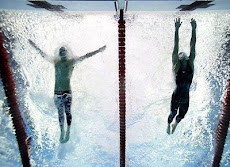Have you ever experienced breathlessness while exercising and training? Why do I breathe so heavily during exercise? What can be done to improve your breathing during exercise?
I want to explain some physiological terms and reasons that will help you understand why you get breathless during exercise. Firstly during exercise and ordinary living air that enters your lungs is termed inspiration and air that leaves your lungs is termed expiration. In order for both these processes to occur there has to be a positive pressure gradient, which happens when air moves from a high pressure to a lower pressure. So when inspiration occurs, the partial pressure of oxygen in the atmosphere is greater than the partial pressure of oxygen within the lungs. Therefore the oxygen moves into the lungs, and from the lungs it moves into the bloodstream because the partial pressure of oxygen within the lungs is greater than the partial pressure within the blood. The oxygen within the bloodstream then enters the muscles and tissues due to a positive pressure gradient. Obviously when we breathe out we don’t expire oxygen but instead we expire carbon dioxide. Carbon dioxide moves outside the body cells and into the capillaries and then from there it moves into the lungs and is expired through the mouth.
Another very important aspect is hemoglobin protein that is found within the blood cells. About 98% of oxygen is transported in the blood bound to hemoglobin. The affinity of oxygen to the hemoglobin depends on the partial pressure of oxygen within the blood. At very high partial pressure of oxygen like those found in the lungs results in the hemoglobin being saturated with the oxygen molecules. This is due to the fact that there is already a great amount of oxygen within the lungs. So hemoglobin does not need to unload much oxygen there. On the opposite spectrum low partial pressures of oxygen like those found at tissue level results in a great unloading of oxygen from hemoglobin. This is because at the tissue level the cells need great amounts of oxygen to function. Obviously during exercise this will change and greater amounts of oxygen will need to be delivered to the functioning tissues. During exercise the muscle temperature increases and blood ph levels drop. Both of these factors affect the affinity of oxygen to hemoglobin. These factors both result in more oxygen being unloaded at tissue and muscle level due to the fact that the partial pressure drops.
Have you ever wondered why you breathe so heavily after exercise or even walking fast up a flight of steps? This is termed EPOC (excess postexercise oxygen consumption) and can explain the reason for heavy breathing after exercise. When you start aerobic exercise your oxygen consumption takes several minutes to reach steady state and so the aerobic energy system doesn’t function immediately. So in order to generate energy for the working muscles the body has to rely on the anaerobic pathways to produce ATP. So therefore an oxygen deficit takes place during the first stage of exercise. At the end of exercise your breathing remains elevated for some time. This is because during the initial stage of exercise some oxygen was borrowed from hemoglobin and now at the end of the exercise it has to be replenished. The respiration also remains elevated during this time of recovery to get rid of the excess carbon dioxide that is formed as a by product during the anaerobic pathways. Also the muscle temperature is increased resulting in the respiration and metabolism remaining high.
If we put all of these physiological factors together we will be able to determine why we breathe so heavily during exercise. When you start exercising your muscle temperature increases and your blood ph level drops. This results in a build up of carbon dioxide within the blood stream and muscles causing the oxygen hemoglobin curve to shift to the left resulting in oxygen being delivered to the working cells at lower partial pressures. Due to this fact there will be less oxygen returning through the system to be delivered to the active areas, and there will be greater concentrations of carbon dioxide in the system. In order to overcome this imbalance the respiratory muscles will contract at a quicker rate so that they can speed up respiratory inspiration and expiration. During the inspiration phase the lungs will try to bring in more oxygen from the atmosphere, while during the expiration phase the lungs will be getting rid of the excess carbon dioxide. So basically the heavy breathing during exercise is a result of your muscles not being able to get enough oxygen to them, and also not being able to buffer the build up of carbon dioxide. Another reason for this could be that your body is using anaerobic pathways in order to produce energy during exercise. The heavy breathing will continue during exercise and slightly afterwards due to EPOC as explained previously.
What I suggest is that before you begin exercising to go for a light jog to almost get the muscles and the aerobic system ready for what is to follow. This will ensure that the muscles know what to expect and don’t have to take drastic measures when the intensity during the exercise is increased.
Trevor Court
Showing posts with label hemaglobin saturation curve. Show all posts
Showing posts with label hemaglobin saturation curve. Show all posts
Friday, March 26, 2010
Subscribe to:
Posts (Atom)



















